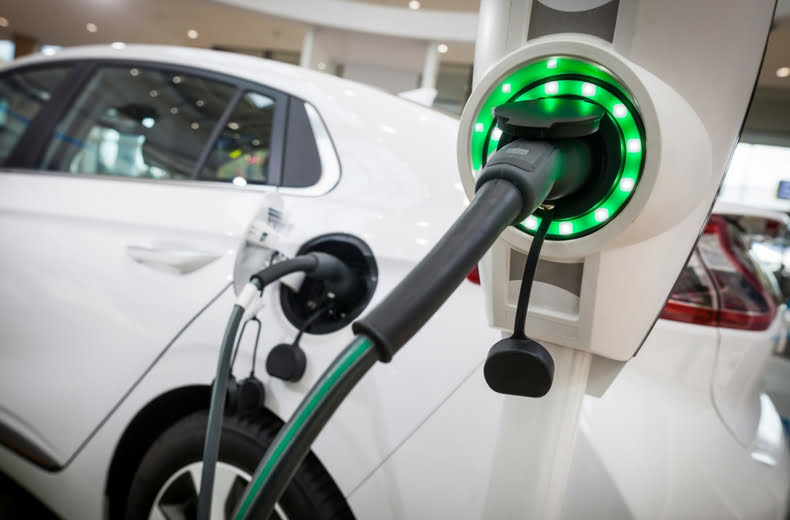The Victorian government’s new $100 million plan to encourage electric vehicle uptake offers a “useful path forward”, but much more work and money are required to reach its target of half of all car sales being electric by 2030, Electric Vehicle Council chief executive Behyad Jafari says.
As part of a wider strategy to reach net-zero emissions by 2050, the Victorian government on Monday announced a $100 million plan to support the acceleration of electric vehicle (EVs) take-up in the state.
It came just a week after a coalition of industry groups and manufacturers branded the Victorian government’s plan to introduce a tax on EV users as the “worst policy in the world” for the sector. It will also likely help this tax policy pass through Parliament in the coming weeks.

The flagship policy in the $100 million plan is 20,000 subsidies of up to $3000 for new electric vehicle purchases of less than $69,000. Up to 4000 of these subsidies would become available from the coming weekend.
The policy package also includes $19 million going towards new charging stations, and $10 million to expand the government’s EV fleet by 400 cars over the next two years.
Underpinning the strategy is a new target to have half of all new car sales in the state by zero-emission vehicles by 2030.
“When people get an EV they are starting to save significant dollars off their bills. It’s almost up to $1600 that is saved off fuel and maintenance costs, each and every year, so we want to make it easier for Victorians,” Victorian climate change minister Lily D’Ambrosio told ABC News.
The new strategy has been welcomed by the Electric Vehicle Council, with Mr Jafari saying the government’s target is a strong signal that it will act to encourage the uptake of EVs. But he said much more will need to be done beyond the $100 million to actually achieve the target in the next nine years.
“It’s a holistic package and it gives us a really useful path forward. It’s exciting that the Victorian government has said they want half of new car sales to be electric by 2030. That’s something we’ve said for some years, and now they’ll need to create policies to help inform them to get to that point,” Mr Jafari told InnovationAus.
“The Victorian government is going to need to do a lot more in the future to get there, but it has committed to that goal. That lets us work with them constructively to get there.”
The incentive scheme is a positive start, but Mr Jafari said he is concerned about the $69,000 cap on the value of the vehicle being purchased, and the low number of payments on offer initially.
“Globally it’s the single most useful thing in accelerating uptake – but around the world they’re much larger,” he said.
“Politicians worry about what it looks like politically, about who is getting the incentives, and that’s understandable. But that cap is more challenging, and we will continue to have discussions with the government. They’re going to need a lot more stimulus from the government to get there.”
The Victorian government is also planning to introduce a road tax for electric vehicles from July, with expectations of raising $30 million over four years. The tax will be set at 2.5c per kilometre for owners of electric vehicles and is expected to cost them $300 per year.
The new tax was labelled the “worst electric vehicle policy in the world” by a group of manufacturers and industry groups last month, with the organisations calling on the Victorian upper house to reject it.
A number of upper house crossbenchers had signalled they would not support the new tax without accompanying incentives for EV purchasing, like those unveiled by the state government this week.
Mr Jafari said he still hopes the state government will reconsider the timing of the new EVs tax.
“The individual things like the tax and the number of subsidies on offer, there’s more work required there. Taken in totality of having targets in place and wanting to do more, now there’s a useful path to talk about the impact of individual actions, and what else needs to be done to achieve their own goals,” he said.
“It gives us a path forward because it’s no longer about us convincing the state government to do things, it’s their target now.”
The significant policy package from the state government also places further pressure on the federal government to take action to support growth in EVs, he said.
“We’ve seen states having to act to pick up the pieces. We can’t sit around waiting for the federal government to get its act together, we’ve been waiting for over a decade,” Mr Jafari said.
“States have shown they’re willing to take the initiative, and that puts more pressure on the federal government. But so do a lot of things and they haven’t acted yet.”
The federal Opposition unveiled its own EVs policy package last month, included the reduction of the import tariff on EVs worth less than $77,565 and an exemption from fringe benefits taxes.
During the 2019 election campaign, Labor committed to the same target now adopted by the Victorian government, to have 50 per cent of all new car sales by 2030 be electric vehicles.
Do you know more? Contact James Riley via Email.


No matter how many taxpayer funded subsidies are handed to them, (they claim) it’s never enough and they need lots more.